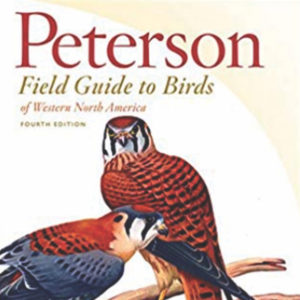Five basics to get you going
In the still of early morning, even city dwellers can hear the dawn chorus—the singing of early birds—especially in the spring. If that sound has ever inspired you to learn more about its makers, now is a great time of year to follow up on that impulse.
When first wanted to Learn Bird Watching it may seem overwhelming: What tools do you need, where do you go, and how do you even begin to differentiate one bird from another?
To start, I would download an app such as Merlin Bird ID, or purchase a field guide book such as Peterson’s Field Guide to Birds of Western North America. This will allow you to understand the physical characteristics of certain species as well as their habitats throughout the year.

You will also want a good set of binoculars or a long-range camera to be able to get a good image of the bird. Porro prisms are great binoculars for beginners because they focus quickly. A handheld audio recorder (which may be your phone) may also come in handy; if you are unable to identify the bird based on its appearance, you may be able to do so by its song.
When looking for places to see birds, there are many fantastic locations in the Great Salt Lake area—a handful of which are even some of the most notable birding sites in Western North America. Locations such as Antelope Island, Farmington Bay, City Creek Canyon and Big Cottonwood Canyon are great places to start, but birds can be found anywhere. Sometimes nearby ponds or parks are just as abundant.
Typically the most productive times to bird watch are in the morning or at dusk as most birds are highly active during these times. As you study specific birds you’ll get a feeling of what locations they can be found in whether marshy areas, high trees or on the ground.
A great place to meet expert bird-watchers and learn to bird watch is the Annual Great Salt Lake Bird Festival, taking place this year May 16-20. The festival provides tours to birding areas near the Great Salt Lake, workshops with professionals, exhibitors and more that can help you begin your new birding obsession.
Now that you’ve got what you need to set out on your very own birding expedition, there are five simple steps that will help you to identify specific birds.
- Understand the environment and habitat of the bird you are looking at. By doing so, you will be able to eliminate a large portion of the bird population just based on the area.
- Examine its body size and anatomy. Observe the shape of its neck, beak, legs, body and other parts to get a general feel of what this bird looks like and how its physical traits have adapted to its habitat. For example, if the bird has webbed feet it’s a good indicator that it has evolved to live in an aquatic environment which is a major clue to what kind of bird it could be.
- The colors and patterns on a bird can quickly reveal the species, but they can also be misleading. Many birds are sexually dimorphic, meaning the males and females exhibit different physical traits—for instance, the bright colorful plumage of a peacock can only be found in the males. While it is simple to identify a male peacock due to its color, it becomes trickier to identify its more subtly shaded counterpart. In many types of sparrows, the field marks on their backs are so nuanced that it becomes extremely difficult to differentiate species. So pay close attention to the bird’s coloring and patterns; they can be a subtle—but key—clue.
- What is the bird doing? By studying its overall behavior you can understand what kind of bird it is. Some things that can give it away are whether it’s in a flock or alone, what it’s eating, or if it’s hiding or out in the open. These clues can help you distinguish between very similar looking birds.
- Finally, listening to and memorizing certain bird calls and sounds can be an easy indicator of what bird you’re seeing. A bird identification app is fantastic for birding because you can look up the sounds of birds that are similar to those you are seeing but can’t quite recognize, and listen to them for comparison.
Now that you know the key components to classifying different birds, you can see how all of these animals are finely adapted to the environments they live in—temperature, precipitation and changing seasons are a few examples.
But what happens when these environments change?
According to the Audubon Climate Report, over half of the species of birds in the U.S. and Canada are threatened by climate change, with 21% projected to lose more than half of their current range in the next 30 years.
If those early morning bird sounds have sparked a passion for birdwatching in you as they have for me—when you see that flash of bright color or hear the distinct call that makes your heart flutter and your eyes widen with excitement—remember that feeling. Remember it because it is exactly that joy we find in birds that can help to save their habitat and maintain a climate they can live in. We remember our love for the birds because we hope to never have to know a world where they have been forgotten.
Matthew Buxton is a recent Waterford School Cum Laude graduate where he developed a great appreciation for bird watching.
A great place to meet expert bird-watchers and learn to bird watch is the Annual Great Salt Lake Bird Festival, taking place this year May 16-20.
